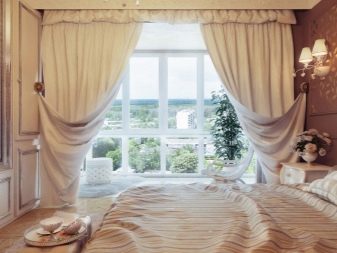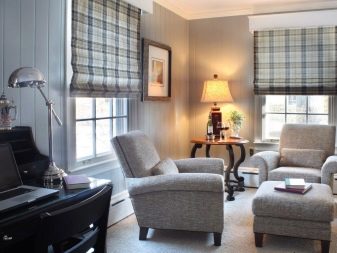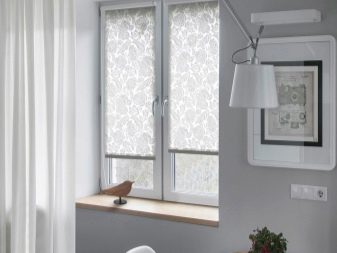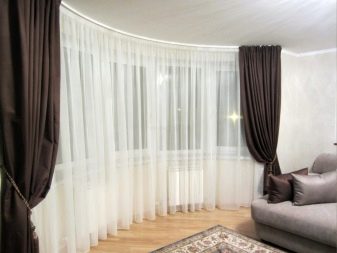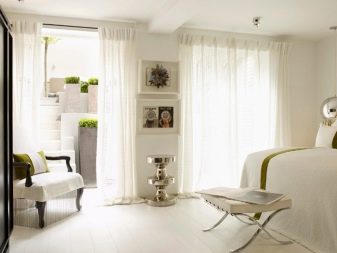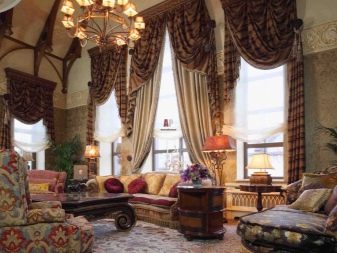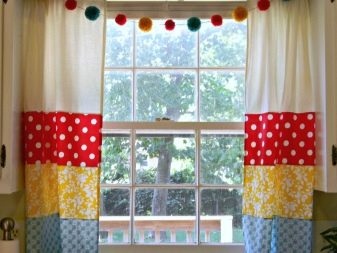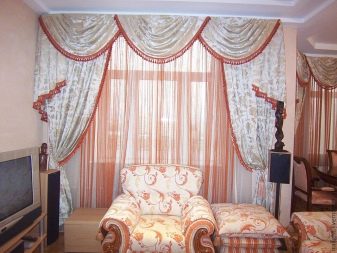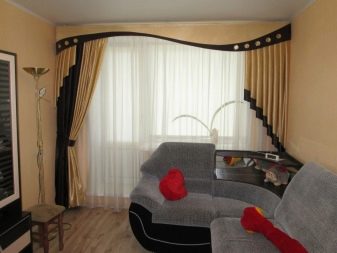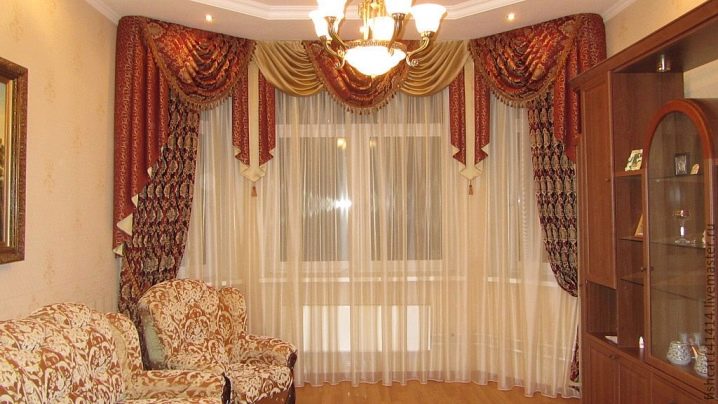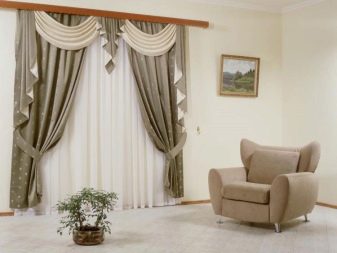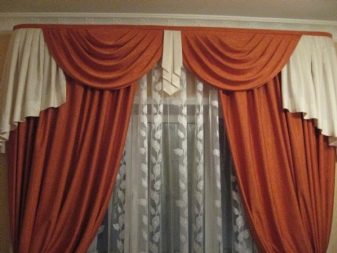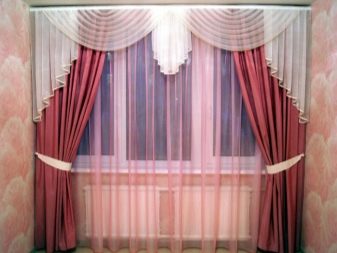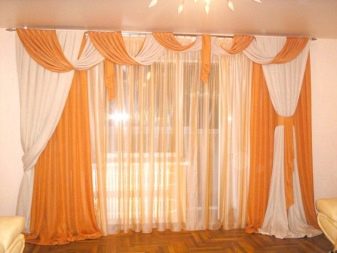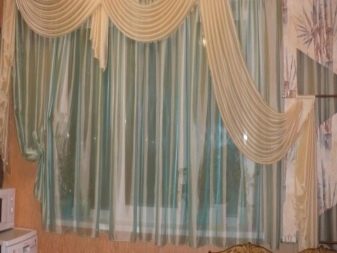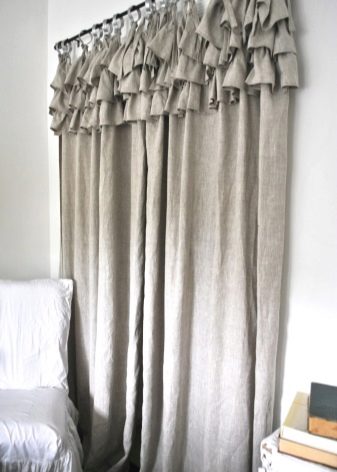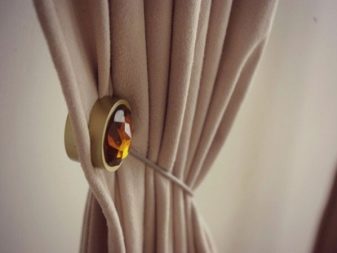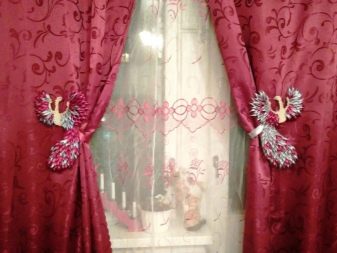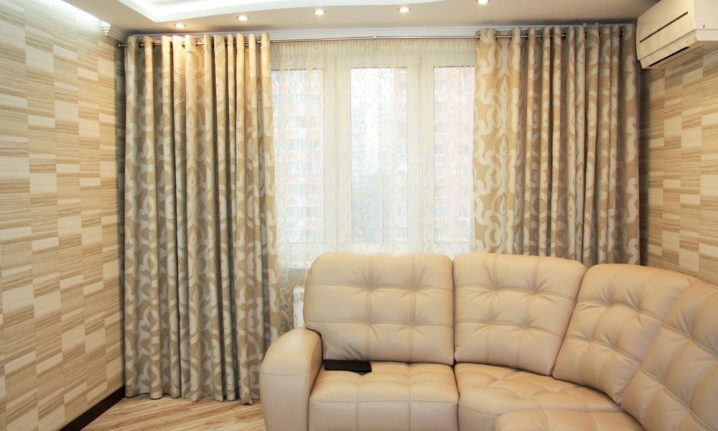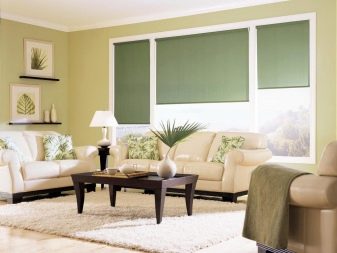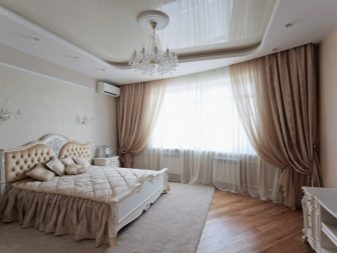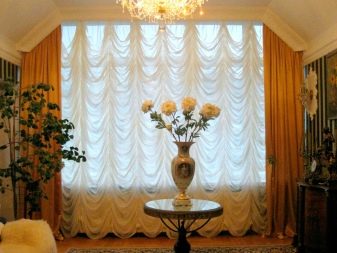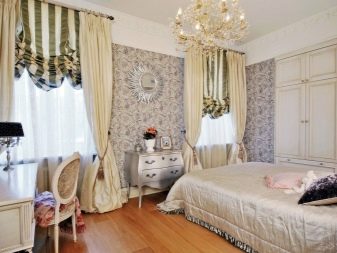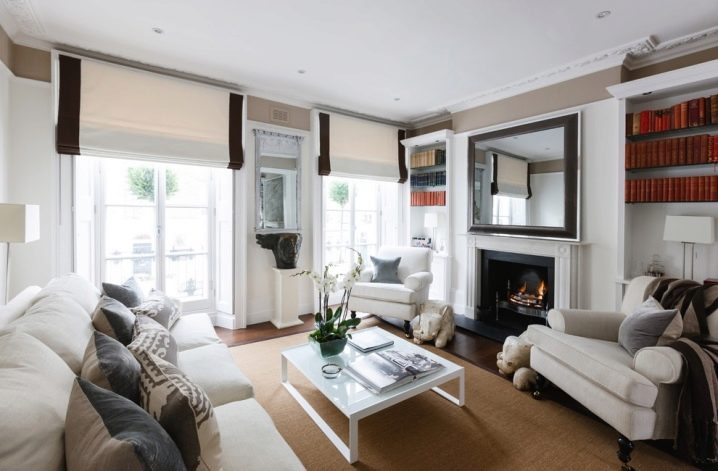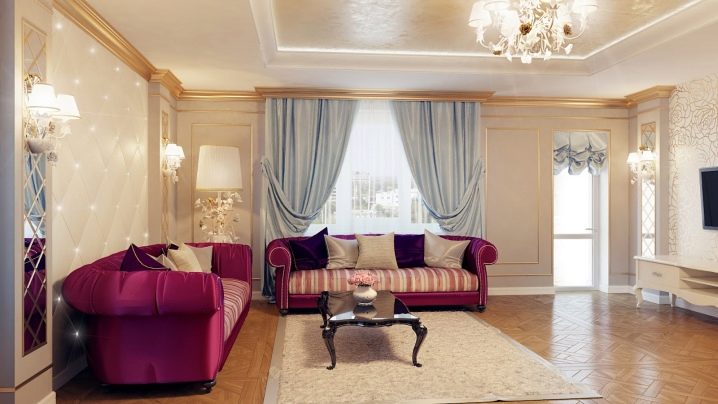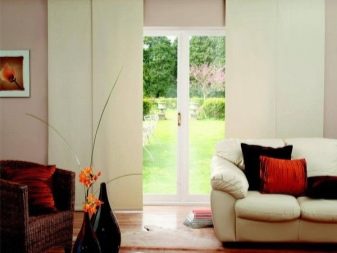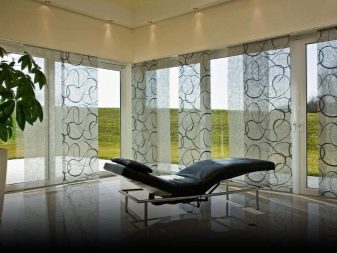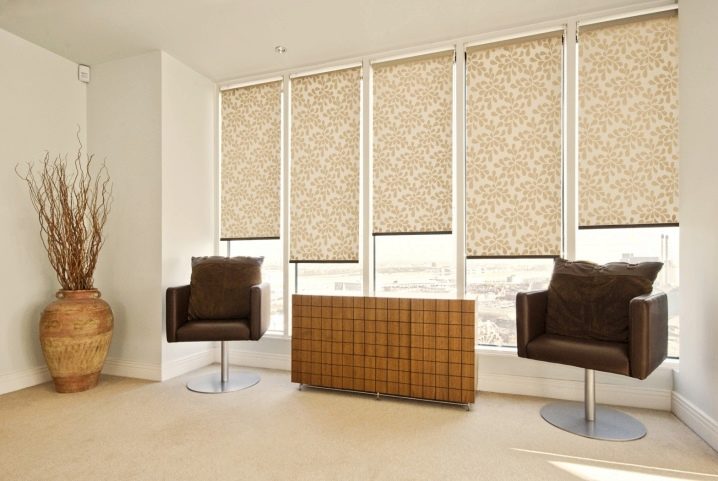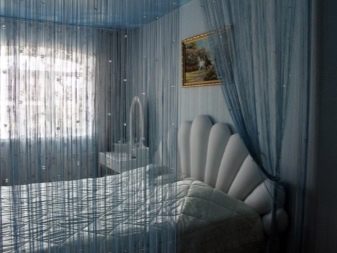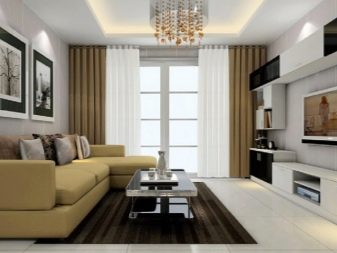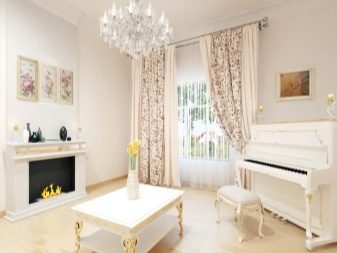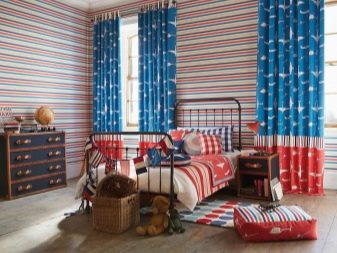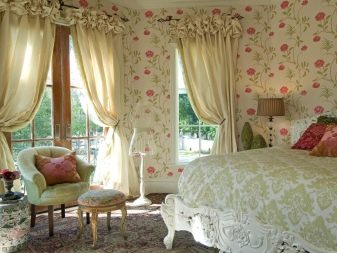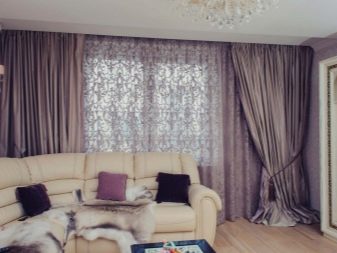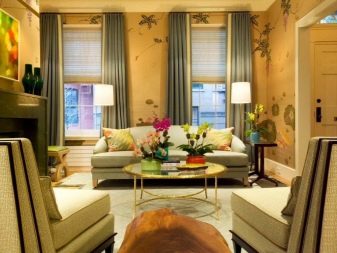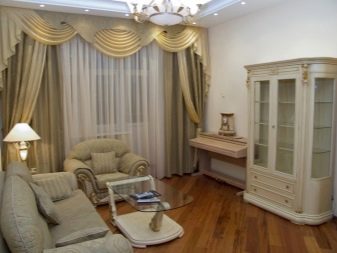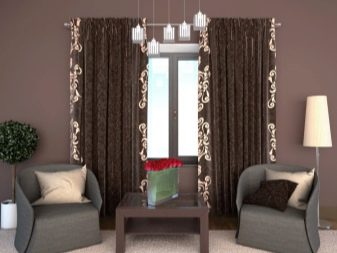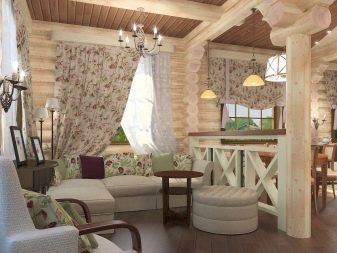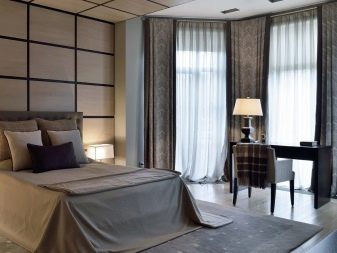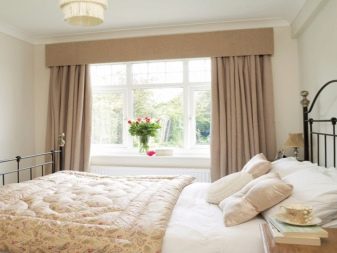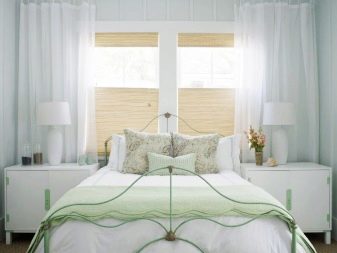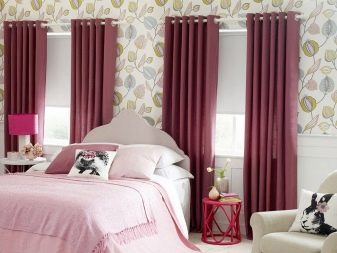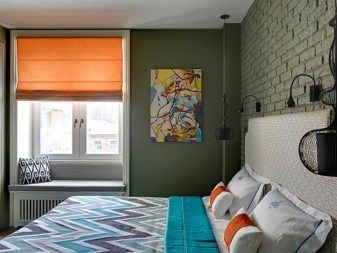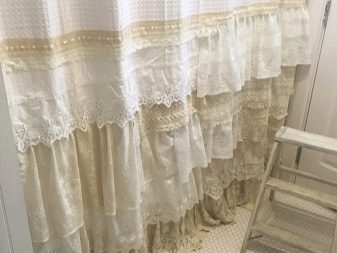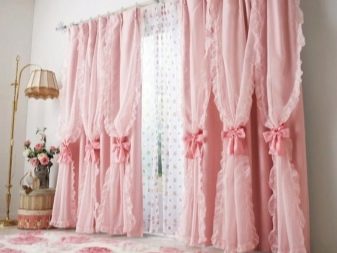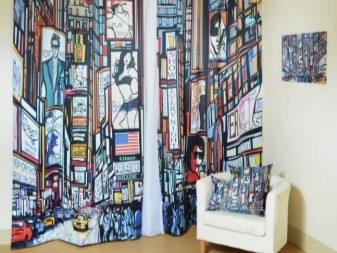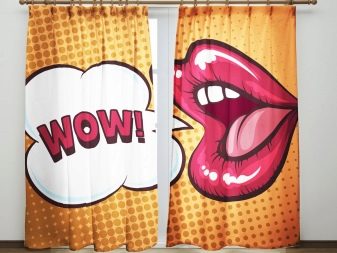What are the types of curtains and how to choose the right ones?
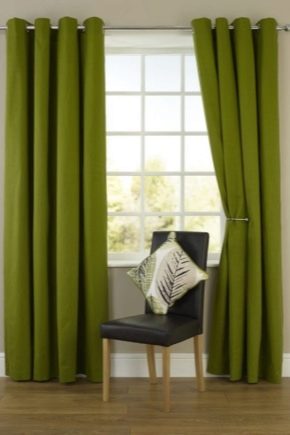
At one time, it was enough for people to cover the windows with curtains of plain fabric, and they already felt protected from sunlight and other people's views. The aesthetic side of the issue is not much strained.
Beautiful repairs with the participation of new building materials have changed the life of modern man. There were such concepts as style, interior design. Windows should also be in the spirit of the times. Sometimes drapery with textiles occupies the entire wall and becomes almost the most important element of the interior. A harmoniously designed window is always pleasing to the eye, and the dull curtain covering the glass creates around itself the same boring atmosphere.
Name features
As a rule, people do not always correctly name window decoration elements.You can often hear curtains called "curtains", and curtains - "curtains". Consider the difference between these concepts.
Curtains
This is a generic name that means any curtain on the window. In addition to fabric sliding sheets, these include vertical Roman, roller and other types of curtains. Curtains often make up a multi-dimensional structure of various types of fabrics: organza, velvet, silk.
All this can be supplemented with pelmets, pickups, ruffles.
Curtains
Similar types of curtains are made of thin fabrics, also apply translucent and transparent materials: nets, tulle, organza. Curtains can be combined with other textiles, they alone do not solve the problem of protection from light. If the transparent fabric is the only window decoration, it is fixed on the eaves and never removed. By the way, curtains have recently been called curtain rods.
Portieres
Dense window leaf, with or without lining, is a drape. In the past, so called only door curtains. Portieres are not only beautiful, but also functional, they can completely block the entry of light into the room.To create shading, it is not necessary to choose heavy imposing fabrics, they can be light, but dense in structure. Portieres are often complemented by other decorative elements.
Curtains
There are many uncertainties associated with this term. Sometimes they call all the curtains on the windows, guided by the Russian word "curtain" and ignoring the French name "curtain". But most often used for short curtains, kitchen window textiles or curtains, stylized as a rural life.
Main elements
To decorate the window, to stylize it under the overall decor of the room, various details are needed, which have specific names. Let's try to figure them out.
Pelmet
Decorative fabric, located at the top of the eaves along the entire window. Lambrequin occupies the first visible row, followed by curtains and tulle. It may have folds, ruffles, or even fabric. Lambrequins look different, but always elegant and attractive. They are attached to the eaves or curtain fabric.
This decor is not recommended for installation in low ceilings, although a properly selected model will not reduce the visual volume of the room. Lambrequins can be elegant, barely noticeable or luxuriant, expressive, dazzling luxury. They have no practical purpose, their goal is a harmonious and balanced completion of the window decoration.
There are several types of lambrequins. Let us dwell on each of them.
- Svagi The most common type of lambrequin. Gathered, with clear folds, slightly sagging fabric, located horizontally along the eaves. Svagi can be small and create a flawless row of draped semicircles or large (from one to three).
Asymmetrical options are quite appropriate here.
- Bando This is another type of lambrequin, but it does not drape, but, on the contrary, is made on a rigid, even substrate, it often has a figured edge and can completely hide the eaves.
- Jabot (de jabot). The final elements of a soft lambrequin, hanging on the sides of the window and indicating its borders. Most often, they look sloping, with uniform folds, resemble a jabot.
- Tie. This subspecies is similar to a jabot with laid symmetrical folds. On the composition of the window occupies a central upper place.This is a decorative element located in the center of the lambrequin, hanging down, it divides the window into two parts.
- Kokilye. Element for a soft lambrequin, symmetrical, folded detail. It looks like two de jabot laid out side by side, long side to each other.
- Perekida. A long, fold-draped fabric spreads over the eaves one or more times, beautifully hanging down in semicircles, and ending with loose ends on both sides of the window.
Ruche
Small in width, but very long, gathered strips of fabric, which sheathe curtains, pelmets, soft holders.
Tacks
Devices that hold the curtains in the open, daily version. They are located on both sides of the window and fix the sliding curtains. On a small window there can be one curtain, then the pickup is set on one side. This detail is soft or hard, in any case, it perfectly decorates the curtains. Tiebacks are set at one third the distance from the floor.
Magnets
The beautiful view of grabs, used on light curtains or tulle. The decor in the form of flowers, butterflies, brooches, geometric figures consists of two magnets, between which the curtain is clamped in the right place.
Grommets
Round metal parts with a hole in the center.They come in different colors and sizes, are selected for the tone of textiles. Cringles can act as decorative elements on flat lambrequins, participate in pickups, but most often they are located along the upper part of the curtains so that a round thin eaves pass through them.
In such a performance, the portiere seems to be pierced with a cornice pipe.
Species
Deciding to hang curtains on the windows, you should figure out what functions they will perform. Those who do not like to get up with the first rays of the sun, will prefer thick curtains. In a room with a stylized repair when choosing curtains, it is necessary to consider the design direction of the interior. Fans of simple free rooms will like Japanese or rolled products. Having studied the description of each type of curtains, you can decide for yourself which one fits the specific interior.
Classic
Traditional sliding curtains, which are made from soft fabric. They are suitable for almost all styles due to the variety of colors, texture of fabric, style and decorative elements. Classic curtains cover the entire width of the window and hang from the ceiling to the floor. Most often they are complemented by transparent tulle.Many portieres decorate lambrequin, sticking, fringe.
French
French curtains are a legacy of Baroque, they look pompous and solemn, no theater can do without them. The curtains are arranged in the form of a beautiful vertical drapery, divided into sections, which is formed with the help of special cords and works only in an upright position.
Austrian
Austrian curtains appeared in Viennese houses in the XVIII century, and today they can be found in all European countries. In the expanded form, they are a solid canvas, divided into several vertical sections, which become visible only during the lifting of the curtain. With the help of a massive tightening cord, the sections begin to drape from below, the upper part of the web remains flat. The higher the curtain rises, the more sections are draped.
Roman
Roman curtains look closed as a solid canvas with transversely fixed slats, which, when lifting, form beautiful uniform waves of folds. Not only dense, but also thin fabrics, almost transparent materials are suitable for their creation. Rise canvases with cords.Roman curtains beautifully decorate the window even in deep niches, they are good in kitchens, in small rooms, freeing space from lush curtains.
If desired, on large windows they can be combined with soft classic curtains.
English (London)
This type of curtains is often confused with Austrian ones, but they are distinguished by a significant width of the canvas, thanks to which the finished design is decorated not only with the horizontal folds of the sections, but also with the counter vertical ones. The model belongs to the class of cascade curtains, and the lifting mechanism follows the Roman variants. The curtains are English laconic, attractive in their reserved magnificence.
Italian
Externally, the curtains with their long soft canvases resemble classic ones. But unlike traditional ones, they cannot be opened completely by letting sunlight into the room. Portieres are fixed permanently, and the window is opened only with the help of grabs, hooks, cords, pulling them to the corners of the cornice.
Japanese
They are laconic canvases in the style of minimalism. They are also called screen or panel screens. The model is fixed on a special eaves on which passes the movement.From below cloths are equipped with a weighting agent. The Japanese used such a screen to divide the room into several zones.
Rolled
The dense type of a direct cloth with a weighting compound in the lower part takes the minimum place in a window opening. It has a special lifting mechanism, folding the canvas into a roll. The system can be installed both in the opening and above the window itself - then the window portal is completely hidden behind the canvas, and the curtain becomes an extension of the walls. Rolled curtains have different colors and material, most often used polyester with the addition of natural fibers.
Cotton or rope (muslin)
Kisey comes from the past, for thousands of years it has been used in eastern countries. Today in Europe, cotton curtains are considered to be ultramodern, fashionable, creative. Most often, a muslin consists of woven threads of different structure, for example, polyester with a romantic shine, woven threads of flax or heavy silk. A kisei may also consist of glass beads and seashells threaded through a fishing line. This model of curtains is used not only for windows, it also zoned the room or decorate the interior door.
Subtleties of choice
When choosing curtains, first of all you should consider the size of the window and the size of the room. Long, voluminous and heavy curtains visually make the room smaller, and light and short, on the contrary, increase the space.
It is necessary to pay attention to the style of the interior, because an incorrectly decorated window can spoil even the most expensive room design.
Color is also important in the design of the window.
In dark rooms with windows to the north, the curtains should be light, warm shades. Bright colors in the style of pop art will suit both dark and light room, they are good for children and young people. Romantically-minded people will choose curtains without the main color, they are impressed by gentle pleasant undertones: pink, purple, salad, cream, pistachio. Impulsive natures can make the window accent in the interior, picking up bright textiles to the curtains.
Choosing the composition of the window, you should pay attention to the details: pelmets, podhvaty, lining. They can either decorate and bring to perfection, or ruin the interior. An abundance of jewelry will suit only certain historical trends (Baroque, Rococo, Classicism) or Provence, Vintage, Chebbi Chic styles. But in this case, decorative elements should be selected with an understanding of the topic.If in doubt, it is better to entrust the window to the designer, otherwise it will become a subject of irritation for several years.
In the living room
The room where guests are received should not be dull and faceless. This is where you can show all your imagination. But if this fantasy is poured out on furniture, collections, works of art, then the curtains should be selected plain, without decorative excesses, so as not to drag attention from the dominant interior items. With a moderate tonality of the walls and furnishings, curtains can be accented. In standard cases, the difference between the drapes and the wall is two tones.
For the hall you can choose such types of fabrics as muslin, tapestry, brocade. They do not crumple, do not fade, can add solemnity and chic to the interior.
They look good on windows, velvet, wool and velvet, but these fabrics collect dust, their care is too complicated. In this case, the output can be an artificial canvas.
Rustic-style interiors and kitchen windows need natural fabrics (cotton, linen). After washing, they have to be steamed and smoothed for a long time, but it is these fabrics that create warmth and home comfort in the room.
To the bedroom
Halftones are chosen in the bedroom - primary colors or contrasts do not contribute to sleep immersion. Delicate shades, soft folds, wavy lines, warm comfortable fabrics - everything you need for window decoration in the bedroom. This room does not need a lot of details, they do not allow to focus on the main thing - silence, peace, pacification. Often the covers or pillows are the same as the curtains tonality, but the wallpaper should be a few tones lighter (darker), if not the task is to completely dissolve in a uniform color.
Choosing curtains, you should pay attention to fasteners.
The easiest way to hang the cornice is by hooking the fabric onto hooks or clips. But for some styles, other devices are suitable, for example, magnets, ribbons, ties. It is better to install a beautiful dense web creating symmetrical folds with eyelets or large loops, threaded through a round cornice.
Options in the interior
The appearance of the curtains depends on the styling of the room, the taste of the owners and the purpose of the room.
Different styles form your image of window decoration.
- Classicism. The sophisticated design of the bay window.Several colors of soft fabrics are used, which are decorated with lambrequins, tassels and pickups. Good looks classic version of chocolate curtains for the office. Simplicity in execution, but at the same time satin chic, emphasizes the good taste and presentability of the owner.
- Loft. Loft style prefers Roman blinds or simple natural fabrics with no frills and bright colors.
- Shabby chic. Curtains imitate the old, made of laces of different textures. A perfect solution would be a three-dimensional set of curtains, decorated with bows and ruffles characteristic of this direction.
- Pop Art. To decorate the window in this style, you will need two canvases and simple tulle. Any complicating elements, elegant eaves and other details. And at the same time, the window draws attention with a catchy, multi-subject image.
- Provence. The cozy rustic style of Provence combines floral chintz of Austrian curtains and light drapes with elements of the “bishop's sleeve”, creating a stylish volume.
Curtains - a beautiful decoration of any interior, in addition, they save from the sun and prying eyes. Beautiful window styling will please more than one year.
How to choose curtains, see the next video.

